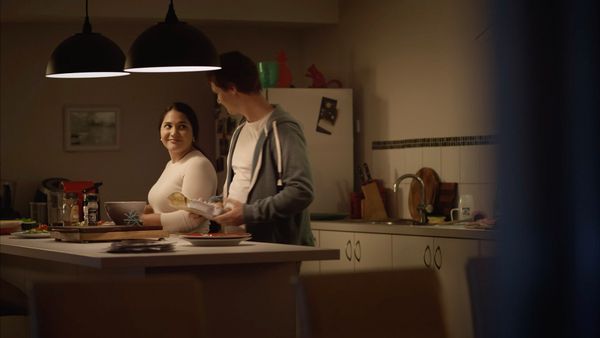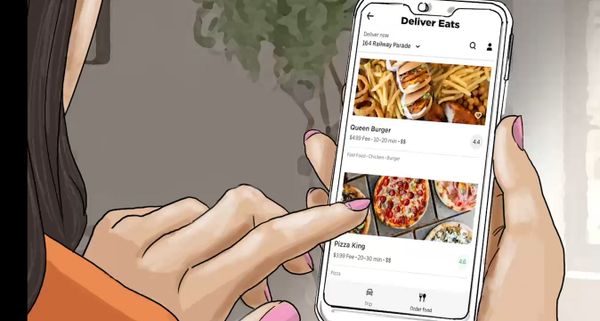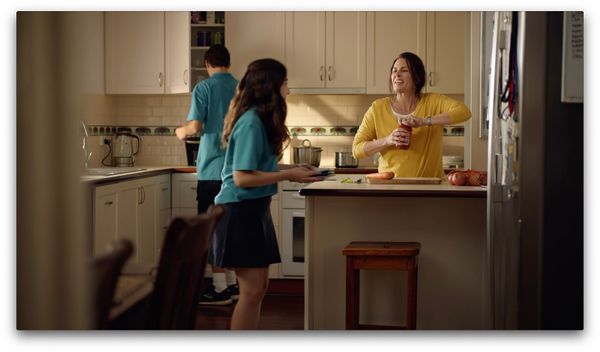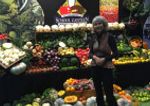Selling health: the art and science of public health campaigns
by James Stevens-Cutler, LiveLighter campaign coordinator
- July 6, 2021
- Leave a comment
Advertising campaigns. They’re literally everywhere. Even if you’ve done away with ads on free-to-air TV and radio by opting for streaming services instead, you’re still likely to come across hundreds of ads as you go about your day-to-day life. They’re on billboards and bus shelters on our commute, on our phones as we scroll through social media, and all over our screens when we browse the web. It’s impossible to completely avoid exposure to these messages. And while we may believe ourselves immune to advertising, remember that it costs mega-bucks to run these campaigns, and advertisers wouldn’t invest if it didn’t work.
The junk food industry knows that advertising works, and they spent a whopping $11 million buying traditional ad space (like TV, billboards and bus stops) last year in Western Australia alone. This is on top of millions that would have been invested in making the ads, paying the celebrity promoters or money spent on digital online advertising. While it might seem that airing the LiveLighter campaign to encourage healthy eating sets the scene for a David vs Goliath battle, results are showing that the campaign is helping to level the playing field by exposing the junk food industry’s marketing tactics and encouraging some really positive shifts in population behaviours relating to junk food and drink consumption.
You may have seen that LiveLighter recently launched a brand new ad campaign, focusing on the health risks of eating too much junk food. Our new campaign was two years in the making, with much of 2019 and 2020 dedicated to campaign research, planning and development.
Have you ever wondered what goes into creating a brand new health advertising campaign? Read on!
Formative research
The first part of our work involves understanding what our target audience (Western Australian adults) thinks about weight, food, physical activity and health; what they know about the health risks of being above a healthy weight and what makes it easier for them to eat well and what makes it more difficult. We conducted focus group discussions with a mix of people of varying demographic profiles, including gender, age, location and weight. This was led by an experienced researcher, and resulted in some crucial insights for the direction our new campaign:
- Communicate with empathy – we want to empower people to live healthier lives, not tell them off.
One of our new ads concludes with the voice over “You might have tried before, but why not try again?” This line acknowledges that avoiding junk foods can be challenging but also conveys a sense of understanding and motivates action.
- Create concern so that our messages are taken seriously.
Our ads contain graphic images of toxic fat and cancer.
- Portray people in social settings to encourage viewers to think about the shared experiences, challenges and achievements of eating well and avoiding excess weight gain.
Both ads feature multiple characters in everyday situations: a couple, work colleagues and a mother with her children.

- Avoid the terms ‘overweight’ or ‘obese’, and instead refer to ‘excess body fat’, a more relatable term according to focus groups.
Many WA adults don’t realise that they are above a healthy weight, however they do acknowledge that they carry excess body fat. People are more likely to relate to this language.
- Continue to raise awareness of the link between overweight and cancer, with reference to specific cancers.
Only 1 in 2 people are aware of the link between overweight/obesity and cancer. To put that in perspective, close to 9 in 10 are aware of the link between overweight/obesity and heart disease and diabetes. It's really important we let people know about the link between being above a healthy weight and cancer risk.
Concept development
The results from the formative research, together with a creative brief developed by the LiveLighter team, were then provided to our advertising agency, Gatecrasher. Using their creative expertise and health campaign experience, they developed four distinct creative concepts, each of which could potentially be expanded into an advertising campaign.
Concept testing
To find out which of these concepts would resonate with our target audience, we conducted another set of focus groups. Participants in these sessions were shown ‘animatics’. These are a really basic version of how the final ad would look. Animatics have a series of pictures with a narration describing what would be happening in each shot and what the voice over would be saying.

Although all concepts tested favourably, one was a clear standout – ‘Menu App’. This concept shows people ordering fast food using a smart phone app. People we spoke to said they saw themselves in this ads, especially because of how popular food delivery apps have become over recent years. As one focus group participant said after watching the animatic:
“Very relatable. Scrolling through UberEATS without really thinking about what you’re eating – just thinking oooh that looks good. But nothing on there is really healthy, it’s all just processed meat and fat!”

As well as helping to determine which concept should be selected for LiveLighter’s new advertising campaign, the concept testing process helped us refine some specific parts of the ad to make sure it was as impactful and relatable as possible. Some specific things that jumped out during this phase of research included:
- Not over-emphasising the body parts of characters (particularly close-up shots of the waist) as we don’t want anyone to feel shame.
- The line ‘Don’t treat junk food as everyday food’ resonated strongly and it was felt that this could be the central message of the new campaign.
- When showing people making healthier food choices at home, focus on what is available in the pantry or fridge, rather than ready-to-eat meals bought from the shop.
We wanted the solution to be as simple as possible, so viewers would feel it was easy to reach for healthy food. The conclusion of two of the ads promotes quick cooking options like pasta (using a jar of tomato pasta sauce rather than making the sauce from scratch) and eggs (omelette for dinner, anyone?) for this very reason. As the third ad is set in a workplace setting where the individual has not brought lunch from home, the solution of grabbing a healthy roll from a café was felt to be most feasible.

And finally…
Production. This is where the magic happens. From the initial Menu App concept, three different TV executions were developed, featuring different people. After the final script was approved, Gatecrasher worked with the production company Stirfry, and director Matt Pitcher, to choose the actors and locations for each ad. Each of the three ads took a day to film and were then edited over a few weeks to get them looking and sounding just right.

What happens now?
Two of these brand new ads were run early this year in WA on TV, radio, online and outdoor ads on bus stops, at petrol pumps and in shopping centres. The second wave has just gone live, and features all three ad executions. This wave will be on air until 11th September. The campaign is currently being evaluated to see how successful it’s been in increasing public awareness of the link between being above a healthy weight and cancer, and to see if people have had less junk foods and sugary drinks as as result of the campaign.
To find out more you can listen to the LiveLighter campaign team chat about the new campaign with the crew from the Meaning of Health podcast.
Have you seen the campaign and want to let us know what you think?
Drop us a line at livelighter@cancerwa.asn.au



